Review for Red Dwarf: Complete Series 3 (2 Discs)
Introduction
Red Dwarf Season 2 was hilarious, but it also left the crew in something of a precarious position, with Dave Lister the mother of bouncing baby twin boys. There is comic potential in that, but continuing with that storyline would significantly alter the dynamic of the show. The hiatus between the two seasons also saw a change in cast member, and the writers decided to add a new character to the mix. That’s a lot to be going on with, and it practically requires the pushing of a reset button when it comes to the premise. With only around 28 minutes per episode to play with, the question arises of how to address the reset. The answer comes in the form of a Star Wars scroll, albeit one speeded up so fast that only the anal with frame advance on their videos which wouldn’t flicker the image too much could waste their time reading it, while the rest of us just got on with enjoying the show. Of course 15 years later, we’d all have DVD, and we’d all be able to read the scroll. If you still can’t be bothered, here’s a summary.
3 million years in deep space, Dave Lister, the last human in the universe is trying to make his way back to Earth on the mining ship Red Dwarf, along with a hologram of his dead bunkmate Arnold Rimmer, a creature evolved from the ship’s cat, and Holly, the ship’s computer that’s crossed over the line into senility. Since the previous series, Dave has returned his twin sons Jim and Bexley to their universe of conception to stop their premature aging, Holly has had a sex change, and Lister located the crashed space bike of the android Kryten, who they first encountered in series 2. They managed to reassemble the android, but he’s lost his original programming, gained a mid-Atlantic accent, and has once more become the subservient manservant that he was originally.
Six more episodes of Red Dwarf are presented in Series III, along with a whole extra disc of extra features and Easter Eggs.
1. Backwards
Rimmer takes Kryten on his piloting test aboard Starbug 1. If the android gets his wings, that will mean a whole new lease of life for the incorporeal dead hologram. But they encounter a Time Hole which sends them back to Earth where they crash land, and find that time is running backwards. Lister and the Cat set out on a search and rescue mission aboard Starbug 2, and fall through an orange swirly thing in space, and wind up on an Earth where everyone speaks Bulgarian?
2. Marooned
Holly spots black holes in the path of Red Dwarf, so everyone has to abandon ship in the hope that she can navigate the mining vessel around the singularities. Lister and Rimmer are together, along with their most prize possessions aboard Starbug, and it crashes into an ice world. With nothing to burn for heat but their belongings, and nothing to eat but a can of dog food and a pot noodle, things look bleak.
3. Polymorph
Lister’s become a gourmet chef, much to the disgust of the Cat. Kryten’s demonstrating the versatility of his groinal socket, with all manner of attachments. Rimmer’s reminiscing about his close relationship to his brothers. Just another normal day aboard the Dwarf, except for the genetic mutant creature that’s just snuck aboard, capable of assuming any form, and hunting for whatever depraved emotion its targets may have so that it can feed. On today’s menu are Cat’s vanity, Lister’s fear, Kryten’s guilt, and Rimmer’s anger.
4. Bodyswap
You would have thought that having the self destruct go off would be the worst thing that could happen. You’d be wrong. When as a last ditch, futile attempt to deactivate Red Dwarf’s auto-destruct, Lister tries swapping his consciousness with that of a command officer, it gives Rimmer an idea. Soon he’s offering Lister the opportunity of getting an MOT for his body, a fitness workout and detox routine, without doing any of the hard work, just by agreeing to a little timeshare.
5. Timeslides
The ennui of being the last human alive is preying on Lister again, which makes for convenient timing when Kryten discovers the effects of mutated developing fluid on the photos that he’s developing. Suddenly, the Red Dwarf crew can travel back in time, within the confines of the photos, and Dave Lister has a way to change history so that he’ll never be marooned on Red Dwarf in the first place.
6. The Last Day
Another message pod has caught up to Red Dwarf, this one with a letter that has been chasing Kryten’s owner for the last 3 million years. It turns out that Kryten is now obsolete, and as per the service agreement, he’ll deactivate within the next 24 hours. Kryten being a subservient android is programmed to obey, but Lister is determined to make his last 24 hours in existence to be the wildest time he has ever had.
Picture
Red Dwarf III gets a 4:3 regular aspect ratio, and it comes from a tape source. Hence the image quality is never going to challenge the limits of the DVD format, and what we get here is just as watchable as it was when it was first shown on TV, complete with the after-burn typical of reflections flaring on screen. The third series saw yet another upgrade when it came to sets and production values, with even more of the show set off the ship. The new Holly goes back to being slightly pixellated, although more jpeggy than 8-bit. Lighting is more atmospheric in these episodes, there’s a lot more colour, and special effects are vastly improved. This series also sees the debut of Starbug and its tendency to crash at the drop of a hat.
Sound
The sole audio track is a DD 2.0 Stereo affair which once again reflects the television of the period, although this time there is greater clarity to the audio, with hiss a problem left behind with the first two series. The all-important dialogue is clear throughout, and subtitles are provided for the show if you need them. Unfortunately there are no subtitles for the audio commentaries.
Extras
Red Dwarf Series 3’s two discs are presented in an Amaray case with the second disc held on a hinged panel. Inside the front of the case, you’ll find a twelve page collector’s booklet with a list of disc contents, although Easter Eggs are just alluded to, rather than listed in detail. There is an overview of the third series, and each episode gets a page worth of making of. There are also items of note and points of trivia, and finally a chapter listing.
Disc 1 presents the episodes with an animated menu. There is an Easter Egg somewhere and you don’t even have to work hard to find it.
There are cast commentaries on all six episodes, as Craig Charles, Danny-John Jules, and Chris Barrie get together with Robert Llewellyn and Hattie Hayridge to talk about the shows. When the shows get funny, don’t be surprised if they wind up watching the gags with you instead of talking. They are still great fun to listen to, recorded as they are after sufficient time for critical appraisal to sink in, with some less than diplomatic anecdotes.
Series 2 was comparatively light when it came to extra features, especially lacking when it came to a cast retrospective about the episodes. Series 3 remedies that, and then some. It also makes sure that this time the extra features are subtitled.
The big documentary can be found from the front page, and is the All Change Documentary, which lasts 81 minutes. It features interviews with the cast, the crew, and the creators, and after about 24 minutes of overview, looking at the changes for the third series, it then takes a look at the episodes one by one.
The Bonus Material offers a selection of animated and text menus, useful as the animated menus can be a bit of a chore to navigate.
One Easter Egg that I found here presented a Flash Animated Ed Bye, Rob Grant, and Doug Naylor having an 11-minute chat about Polymorph.
There are 27 minutes of Deleted Scenes here split up by episode. They are preceded by a selection of Holly prologue one-liners (as per seasons 1 & 2), and it’s easy to see why they were cut. Only one of them actually elicits a decent studio audience laugh.
There are also 5½ minutes of Smeg Ups, in this case actor goofs interspersed with unexpected Starbug crashes. Add to that a couple of Season III trailers salvaged from a generous fan’s videotape collection.
Season 1 let you see its first episode in Japanese in its extra features. Season 3 lets you watch its first episode in Bulgarian... Backwards – Forwards does what it sets out to do, play the whole of the first episode in reverse, so you can see what the reverse bits look and sound like in the right direction. Just like the episode itself, it runs to just over 27 minutes.
Food is a 3½ minute montage of gastronomic delights from all eight BBC series of Red Dwarf, including plenty of curry.
The Gallery offers production stills, behind the scenes shots, models and VHS covers, and candid shots, around 70 in total.
As before, you’ll find the Music Cues on this disc, with the new guitar-y theme, the end song, and the new bits of music specific to this series.
Hattie’s DJ Diary refers to the 2003 Dimension Jump fan convention, and Hattie Hayridge takes a video camera to take a look behind the scenes of the fan experience meeting the stars of Red Dwarf. This lasts 9 minutes.
Mel Bibby Tribute lasts 8 minutes and reflects on the talent of Mel Bibby, production designer, who breathed new life into Red Dwarf for season 3, on a budget not dissimilar to that of the first two series. The cast and the crew provide their memories.
There are 7 minutes of Model Shots, raw footage of the various spacecraft scenes in this series, including lots and lots of Starbug.
Finally Audiobook Clips look at two excerpts from Better Than Life, as read by Chris Barrie, and adding new levels to Marooned and Polymorph.
Conclusion
I still think that Red Dwarf Series 1 and 2 are my favourites of the lot, although I’ve only just re-watched Series 3 of the follow-ups for comparison. Watching Series 3 though, it becomes clear that the show really fundamentally altered its premise at this point. The first two series were a lot like Porridge in space, two antithetical characters trapped by circumstance together in a confined space for long periods of time. Series 2 showed what the set-up was capable of, by embracing a few science fiction concepts, but it was Series 3 onwards that opened up the show, and expanded its outlook beyond the confines of the mining ship Red Dwarf. It’s here that the characters were allowed to explore and more importantly interact with the universe in a way that previous episodes just couldn’t. I have to admit that had Red Dwarf carried on in the same way as the first two series, the premise would have been exhausted in short order.
Would you believe though that initially, I didn’t like the Kryten character? Something about his first appearances in the show just irked me, but it wasn’t until this re-watch that I understood just what. The character is inconsistent in these early episodes, and you can hear in the documentaries that actor Robert Llewellyn was still finding the character some two or three episodes in. This wasn’t helped by the fact that the episodes were shot out of order. His first scenes in the show were actually shot for Bodyswap (although left on the cutting room floor), and that was the fourth show in the run.
I have to say in retrospect that the character of Kryten was a much needed ingredient in the show, and he is a lot more than just the walking exposition bot that gradually sidelined Holly into insignificance. With Kryten, the microcosm of the British class system was brought into sharp focus. Lister, the slob, the layabout, is the representation of the working class Joe, while Rimmer, proper and born to breeding and familial expectations is the representation of the upper classes (albeit handicapped by incompetence and cowardice). Cat is just too zany and out there to really fit any of these roles, but Kryten is the perfect representation of the middle classes, deferential and subservient to Rimmer, but awkwardly trying to be one of the lads with Lister, and nursing a healthy portion of guilt about the whole thing.
The third series begins with one of the most classic, oft quoted scenes in British comedy... the Wilma Flintstone scene. It’s a sign that the show was beginning to appeal to audiences across the pond, but it’s a classic bit of character dialogue that just sparkles. It also establishes that the Cat is moving away from his simple hedonistic self and becoming more nuanced and dimensioned a character. But I have to say that Backwards isn’t my favourite show in the run, aside from the opening scene. It seems to me to be more celebratory of its special effects, and it does on occasion gets lost in its own plot. Certainly, if you think about it, there are more than a few continuity errors. If you watch Backwards-Forwards they become blindingly obvious, including the fact that Rimmer and Kryten are fired before they are hired. Still, it has Kryten as Darth Reagan, and that’s worth a laugh in any reality. I was struck by this when I watched it. When Red Dwarf was first made, Reagan was president and Margaret Thatcher was Prime Minister. It almost feels like ancient history now.
If Backwards got lost in its own technicalities, Marooned is up there for my favourite episode of all ten series. It’s Porridge in space distilled to its neatest precepts. Starbug crashes, and Rimmer and Lister are locked in a room, with just each other for company, and nothing but a pot noodle and a can of dog food to sustain them. It’s pure, back and forth brilliance, just two actors and a great script. It’s followed by the sublime Polymorph, Red Dwarf’s take on Alien, again full of classic comedy moments, and the point where I first realised that Red Dwarf’s production values were sky-rocketing. The polymorph is realised quite well, but the lighting and set design in the episode excels. There are also great character moments, including Lister, Kryten and the incredible shrinking boxer shorts, as well as the characters being subverted when they lose some of their emotions. Peacenik Rimmer is particular delight, and a dead ringer for Rolf Harris.
Bodyswap is just as technically demanding as Backwards was, but is executed with a lot more finesse. I often complain that one of the problems with Series VII was that it lost the studio audience, but Bodyswap had to be filmed in the same way, yet manages to maintain the comedic edge and exquisite timing of the rest of the episodes in this run. While Craig Charles does a fair job in recreating Rimmer, the episode works with Chris Barrie’s portrayal of Lister, and you can see a gifted mimic at work. Timeslides on the other hand is pretty much a remake of Stasis Leak, or at least another visitation of that concept. In Stasis Leak they were limited to travelling back to Red Dwarf in a certain time, where Lister hoped to hook up with Kochanski, and Rimmer tried to change his past. Here, they are limited to travelling in time, but only within the confines of a photograph projection. Again, Lister goes back looking for happiness, while Rimmer once again tries to save his own life. It is more satisfying than Stasis Leak though, more expansive an episode, and certainly funnier, and it has a lot more adventure in revisiting the past, both Lister’s youth, and alternate Lister’s extravagant lifestyle.
The final episode in this run is the one that originally and finally enamoured me of the Kryten character, as it’s an episode devoted to his final day of operation. His warranty is up, and he’s about to be replaced by a better model, and in classic sci-fi fashion, the episode becomes about an android exceeding his programming and learning the value of human friendship, or as Lister puts it... That Star Trek Crap! And then along comes Hudzen, and steal the whole episode by breaking a brick... without his hands...
Red Dwarf Series 3 is a little uneven, and Backwards in particular will never be my favourite episode. Then again it does have in Polymorph and Marooned, two of the best Red Dwarf episodes ever made. What I’m finding most delightful about this re-watch of Red Dwarf, as I work my way through the shows, is that it just hasn’t dated, and I’m laughing as much now as I did when I first saw these episodes. For me, that is rare indeed in a comedy.
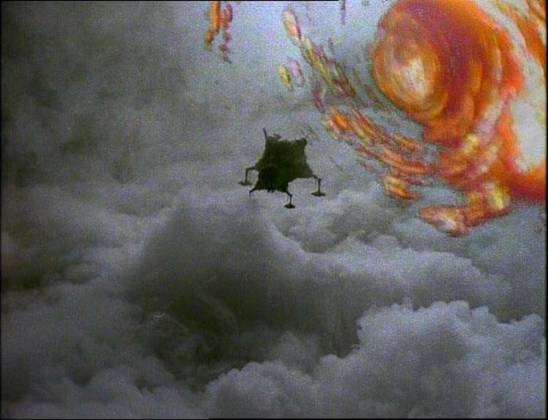
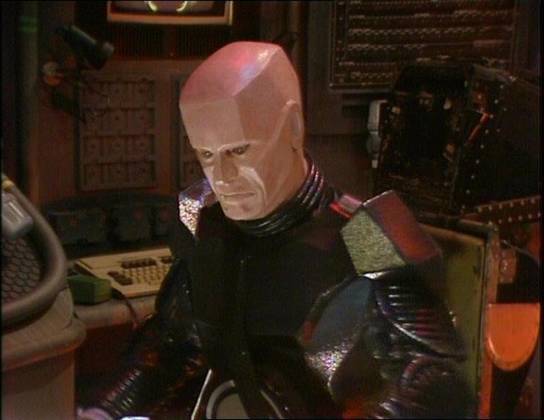
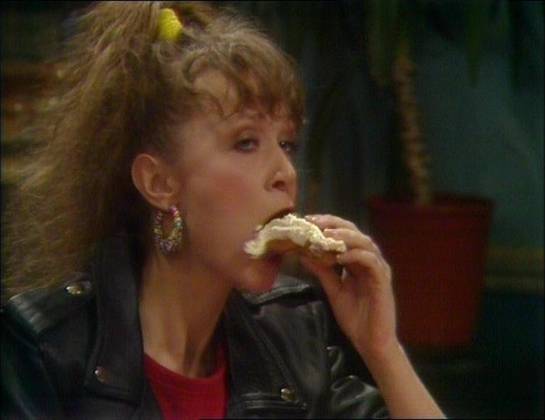

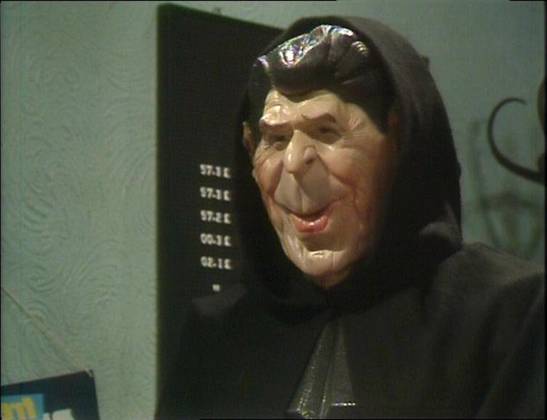
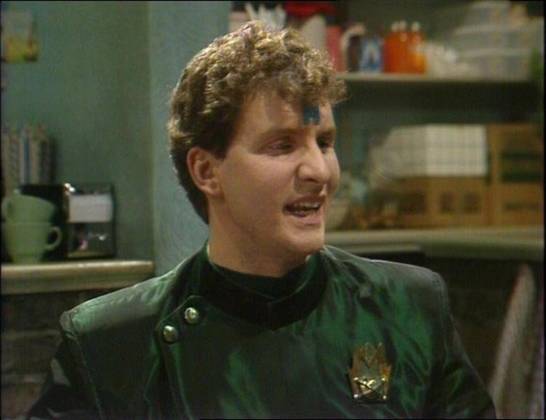
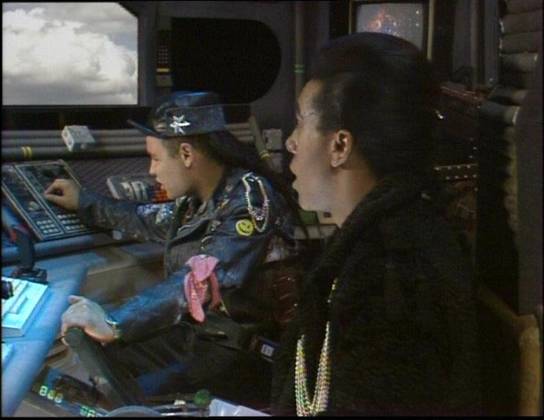
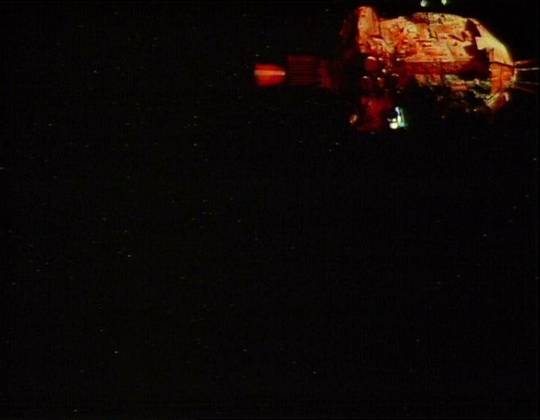
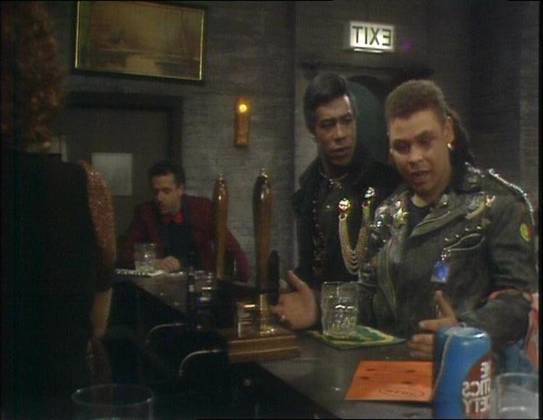

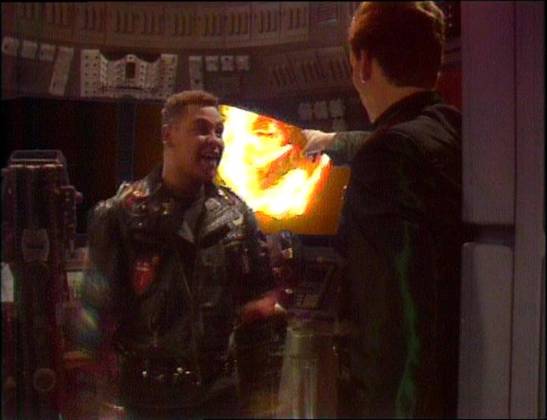
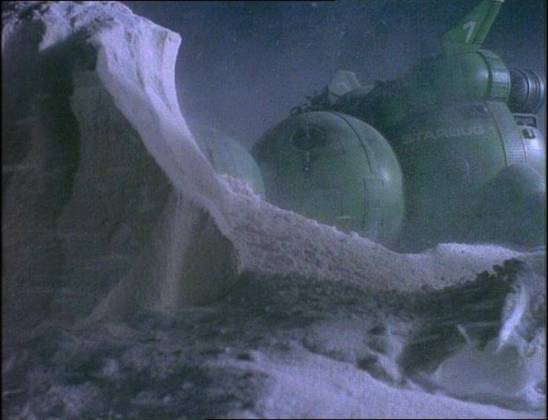
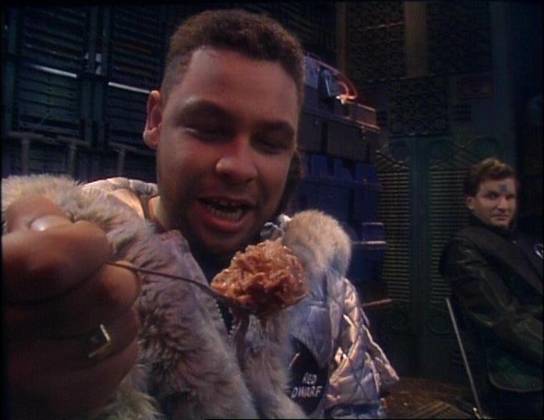


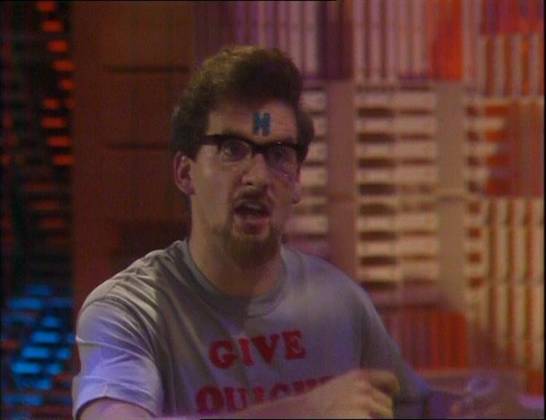
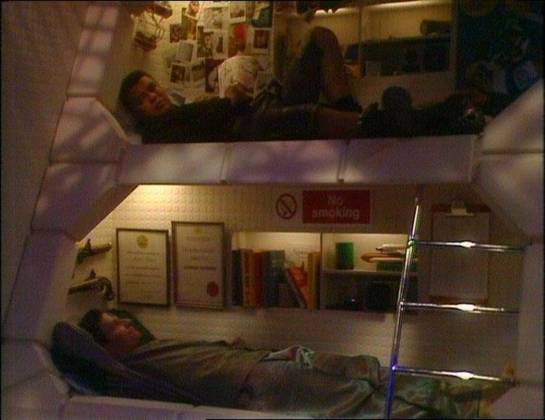

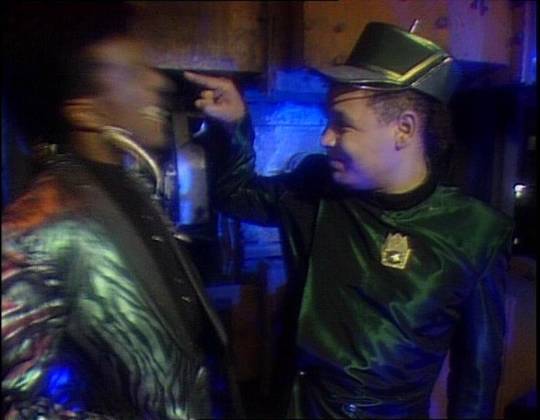
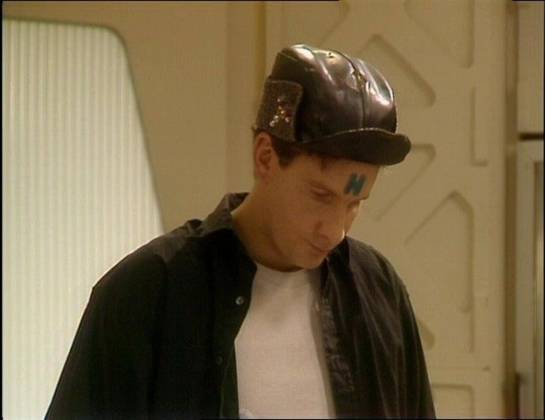
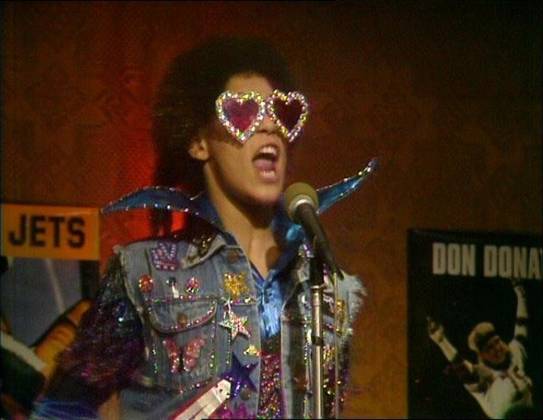

Your Opinions and Comments
Be the first to post a comment!